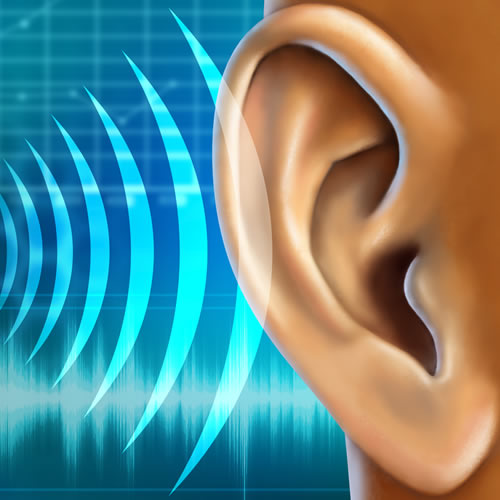How do we hear?
 Hearing is a series of events in which the ear converts sound waves into electrical signals and causes nerve impulses to be sent to the brain where they are interpreted as sound. The ear has three main parts: the outer, middle, and inner ear.
Hearing is a series of events in which the ear converts sound waves into electrical signals and causes nerve impulses to be sent to the brain where they are interpreted as sound. The ear has three main parts: the outer, middle, and inner ear.
Sound waves enter the outer ear and travel through a narrow passageway called the ear canal, which leads to the eardrum.
- The eardrum vibrates from the incoming sound waves and sends these
- Vibration’s to three tiny bones in the middle ear. These bones, called ossicles, are the malleus, incus, and stapes and are also known as the hammer, anvil, and stirrup. The stapes bone is attached to a ligament that holds it into an opening of the inner ear called the oval window.
- The bones in the middle ear amplify, or increase, the sound vibrations and send them to the inner ear—also called the cochlea—which is shaped like a snail and is filled with fluid. An elastic membrane runs from the beginning to the end of the cochlea, splitting it into an upper and lower part. This membrane is called the “basilar” membrane because it serves as the base, or ground floor, on which key hearing structures sit.
- The sound vibrations cause the fluid inside the cochlea to ripple, and a traveling wave forms along the basilar membrane. Hair cells—sensory cells sitting on top of the membrane—“ride the wave.”
- As the hair cells move up and down, their bristly structures bump up against an overlying membrane and tilt to one side. This tilting action causes pore-like channels, which are on the surface of the bristles, to open up. When that happens, certain chemicals rush in, creating an electrical signal.
- The auditory nerve carries this electrical signal to the brain, which translates it into a “sound” that we recognize and understand.
- Hair cells near the base of the cochlea detect higher-pitched sounds, such as a cell phone ringing. Those nearer the apex, or centermost point, detect lower-pitched sounds, such as a large dog barking.
 Hearing is a series of events in which the ear converts sound waves into electrical signals and causes nerve impulses to be sent to the brain where they are interpreted as sound. The ear has three main parts: the outer, middle, and inner ear.
Hearing is a series of events in which the ear converts sound waves into electrical signals and causes nerve impulses to be sent to the brain where they are interpreted as sound. The ear has three main parts: the outer, middle, and inner ear.